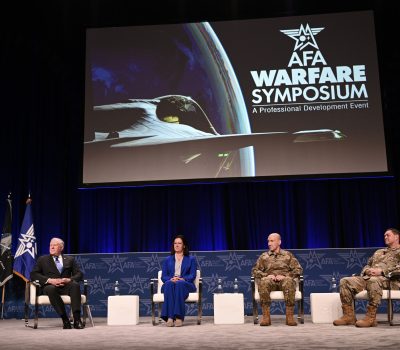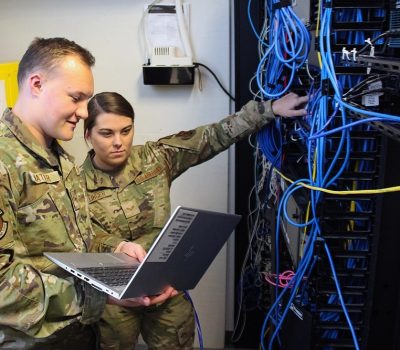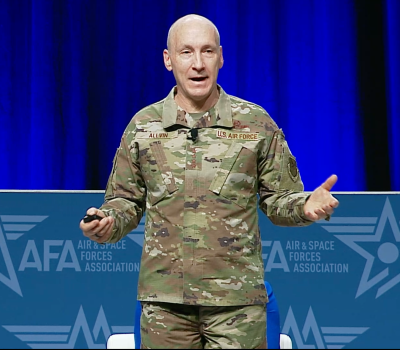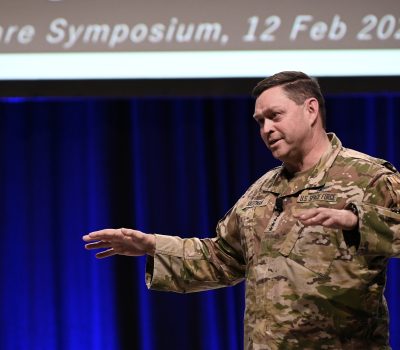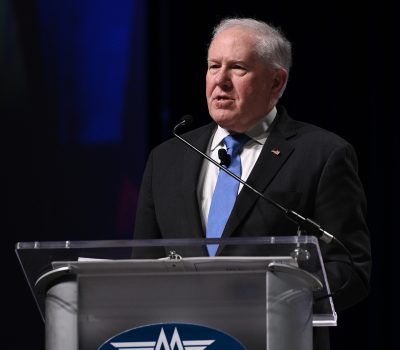Air Force Warrant Officer Program to Focus on IT, Cyber Career Fields
Combat Wings: Air Force Chief Lays Out New Model for Packaging Forces
Saltzman Announces Fourth Space Force Field Command: Space Futures Command
How Tension Between New Integrated Capabilities Command and Office May Benefit Air Force
Radar Sweep
Don’t Call It a Slush Fund: Pentagon’s Top Buyer Says Looser Pursestrings Will Foster Innovation
The Pentagon wants Congress to ease up on budget limits so it can more freely buy technologies, like those used to take down drones, when it needs them. But the two organizations have some serious trust issues to untangle. “We always have the same conversation, all of us collectively,” said Bill LaPlante, the Pentagon’s top weapons buyer, during a recent RAND event on the defense budgeting process. “What somebody looks at as ‘flexibilities’ is another person's ‘slush fund,’ or ‘unmonitored thing’. And that's why people choose all these words so carefully.”
Austin Cancels Trip to Brussels for Ukraine Meeting Due to Hospitalization
Defense Secretary Lloyd Austin on Monday canceled a planned trip to Brussels for a meeting on Ukraine aid this week after being admitted to the critical care unit at Walter Reed National National Military Medical Center over the weekend, the Pentagon announced Feb. 12.
Iraq Says US Troop Drawdown Talks Will Go On 'as Long as Nothing Disturbs the Peace of the Talks'
Iraq and the U.S.-led military coalition resumed meetings Feb. 11 on how to draw down troops who have been deployed there for years combating the Islamic State. The first long-awaited meeting took place Jan. 27, but had since been put on pause after Iran-backed militants struck a U.S. outpost in Jordan the very next day with a drone that killed three U.S. service members.
Despite Huge Industry Losses, Air Force ‘Not Getting Rid of Fixed-Price Contracts’: Hunter
Industry giants like Northrop Grumman and Boeing may have lost billions of dollars recently on their fixed-price deals with the Pentagon, but the Air Force is not moving away from the contracting mechanism even as corporate resistance to the model mounts, according to the service’s top weapons buyer. Speaking during a discussion hosted by the Atlantic Council, Andrew Hunter expressed concern that companies have had to absorb huge losses on fixed-price programs as inflation and supply chain woes have pushed costs higher in recent years. However, the Air Force’s acquisition czar emphasized that the fixed-price model should remain in place especially when combined with a different acquisition approach.
The New B-52: How the Air Force Is Prepping to Fly Century-Old Bombers
The Air Force is preparing to bring on its newest stealth bomber, the B-21 Raider, and retire the aging B-1 Lancer and B-2 Spirit. Sometime in the 2030s, the service plans to have a fleet of two bombers — at least 100 B-21s and the current fleet of 76 B-52s, modernized top to bottom with a slate of upgrades. It is the most sweeping revamp of the U.S. bomber fleet in more than a generation. This $48.6 billion overhaul is intended to keep the (eventually redubbed) B-52J operational until about 2060—meaning the Air Force could be flying nearly century-old bombers.
Space Force Seen as the More Agile Branch to Adopt New Tech
A top official at the Pentagon’s Defense Innovation Unit urged space industry executives not to underestimate the U.S. Space Force’s commitment to adopting commercial products and services, despite some lingering challenges. “The Space Force may be the new kid on the block but they’re leading the charge when it comes to embracing commercial innovation,” said Steven “Bucky” Butow, director of the space portfolio at the Defense Innovation Unit, or DIU.
P&W XA103 NGAD Engine Moves to Detailed Design
Pratt & Whitney’s proposed adaptive engine for the U.S. Air Force’s Next Generation Air Dominance (NGAD) fighter has moved closer to the detailed design review stage following completion of a critical design review with the Air Force. The three-stream engine, the prototype version of which is now dubbed the XA103, is derived from technology developed under the Air Force’s Adaptive Engine Transition Program (AETP).
F-35 Engine Upgrade Program to Run out of Money in June Without FY-24 budget
An ongoing engine modernization program for the F-35 Joint Strike Fighter will have to halt at the end of June if Congress isn't able to rectify a monthslong partisan divide over the fiscal year 2024 budget, Inside Defense has learned. “The program continues to mitigate preliminary design risks,” Russell Goemaere, a spokesman for the F-35 Joint Program Office, said. “We believe, if there is no appropriation, we can use funding for existing work to cover contract costs through June 2024.”
With Austin Recuperating, Who Would Advise the President on a Nuclear Strike?
Defense Secretary Lloyd Austin is expected to resume his duties on Feb.13 after being hospitalized over the weekend for the third time in as many months, doctors at Walter Reed National Military Center said. Austin, 70, has temporarily transferred the duties and functions of his office to Deputy Defense Secretary Kathleen Hicks, though his absences over the past few months have drawn scrutiny to the defense secretary’s role in advising the president on the use of nuclear weapons.

